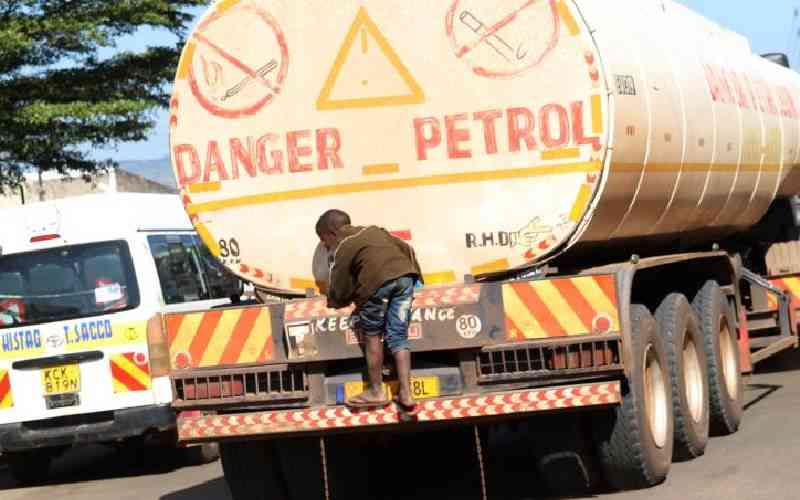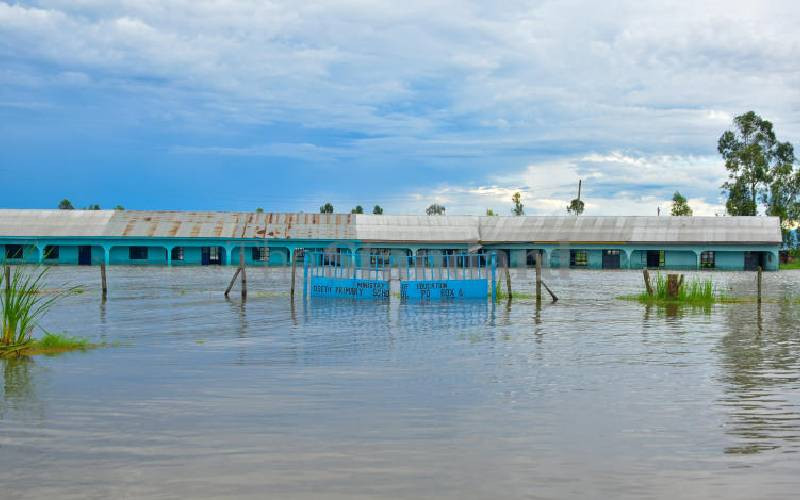By Moses Njagih
How safe is the super petrol you paid for this morning? Is it clean or will you pay hefty sums down the road to flush your car’s fuel tank and filter?
These are the big questions after it emerged that Kenya Pipeline Company has been trying to empty slop tanks in its Nairobi depot of contaminated super petrol for the last couple of weeks.
The Standard confirmed that lorries were still lining up on Tuesday at the KPC depot in the capital to load the dirty petrol and return it to sender.
However, despite strong denials byKPC, there are fears their action might have come too late in the day to stop some of the adulterated fuel from ending up in the market for sale to unsuspecting dealers and motorists.
Efforts to get comments from Gulf Africa Petroleum Corporation (Gapco), the company that imported the fuel, proved futile on Tuesday as the relevant officials were said to be in meetings.
The matter assumes grave proportions when an analysis of the testing and clearing process for oil products at the port in Mombasa and KPC offices in Nairobi is taken into account.
Most cars on Kenyan roads today are designed to run on super petrol. Dirty fuel causes engines to malfunction and leads to costly failure of engine parts.
Such fuel also causes increased emissions of pollutants like carbon monoxide from the tailpipes of vehicles affected, leading to health problems.
Kenya Revenue Authority also loses significant revenue, as dirty fuel cannot be taxed, but must be returned to its port of origin. All super petrol sold locally originates from the Middle East, as the refinery in Mombasa cannot produce the product.
tested
The oil is tested separately in laboratories belonging to SGS and KPC in Mombasa for temperature, density and flashpoint (ability to ignite at the required international standard). Results from both labs must tally before the product is released into KPC’s system and the market. The product must also be recertified by KPC’s lab in Nairobi once it arrives at the depot.
What did the KPC and SGS tests reveal on this bad fuel in Mombasa? What did tests reveal in Nairobi?
Is the fuel that was pumped by KPC to Nairobi at great cost really the same product cleared by its lab and SGS or was it diverted to another market and replaced by dirty petrol?
How did the fuel get into KPC’s pipelines and at what stage was it adulterated given that SGS and KPC tests cleared it?
Stay informed. Subscribe to our newsletter
Fingers of blame over the mess are pointing at the Ministry of Energy and KPC officials and raises concerns over the integrity of the fuel verification and transport system they have deployed.
The destination of the huge consignment of contaminated fuel returned to Gapco by the KPC remains unknown, with fears emerging that the commodity could have already found its way in fuel station pumps in Kenya and South Sudan.
KPC, under whose responsibility the task of transporting imported fuel through its pipeline lies, returned over a million litres of dirty fuel to its client, Gapco, after it failed the grading test.
These fears have further been intensified by the presence of fuel transporting trucks near the KPC’s slop tanks, away from the ordinary collection point along Nanyuki Road.
Kenya Pipeline on Tuesday appeared to distance itself from any possible irregularity or scam in the sale of the product, saying it had rejected the injection of the fuel in question in the market, as it could not meet the minimum requirements for consumption in Kenya.
“Nothing illegal or out of the normal has been done and no contaminated fuel has found its way into the market through KPC,” the company’s Chief Technical Manager Engineer Elias Karumi told The Standard.
The company’s management explained that it had piped the Gapco product — a consignment of 78 million litres — but along the line realised that part of it was mixed up.
clean fuel
Engineer Karumi said that over a million litres of the product had mixed up with clean fuel in the pipeline and thus could not be released.
He said that on testing the product, KPC realised that the same could not be blended to a point of meeting the specifications for the local market. “We realised that their product was already at 207 degrees, and thus it was not possible to blend it without surpassing the upper limit of 210 degrees,” said Eng Karumi.
He said that under such circumstances, the company had to invoke a clause of the Transport and Storage Agreement (TSA), which requires that the rejected fuel be handed to the owners. “It is now up to them to know what to do with the product,” said Karumi.
Karumi denied any illegality, saying the anomaly of mix-up in products being transported through the pipeline is always anticipated, hence the remedial specifications captured under the TSA.
The manager said they had to store the product at their slop tanks as Gapco sought clearances from the Kenya Revenue Authority to move the product after paying their due duty.
“It is only yesterday (Tuesday) that we got a letter from KRA informing us that Gapco had almost cleared with them and allowed their trucks to come and pick the product so that we can empty our slop tanks,” he said.
He could, however, not say where their client will take the rejected product.
“That is a question that would be best answered by the Gapco management. We are only transporters and not the importers,” he said.
 The Standard Group Plc is a
multi-media organization with investments in media platforms spanning newspaper
print operations, television, radio broadcasting, digital and online services. The
Standard Group is recognized as a leading multi-media house in Kenya with a key
influence in matters of national and international interest.
The Standard Group Plc is a
multi-media organization with investments in media platforms spanning newspaper
print operations, television, radio broadcasting, digital and online services. The
Standard Group is recognized as a leading multi-media house in Kenya with a key
influence in matters of national and international interest.
 The Standard Group Plc is a
multi-media organization with investments in media platforms spanning newspaper
print operations, television, radio broadcasting, digital and online services. The
Standard Group is recognized as a leading multi-media house in Kenya with a key
influence in matters of national and international interest.
The Standard Group Plc is a
multi-media organization with investments in media platforms spanning newspaper
print operations, television, radio broadcasting, digital and online services. The
Standard Group is recognized as a leading multi-media house in Kenya with a key
influence in matters of national and international interest.









